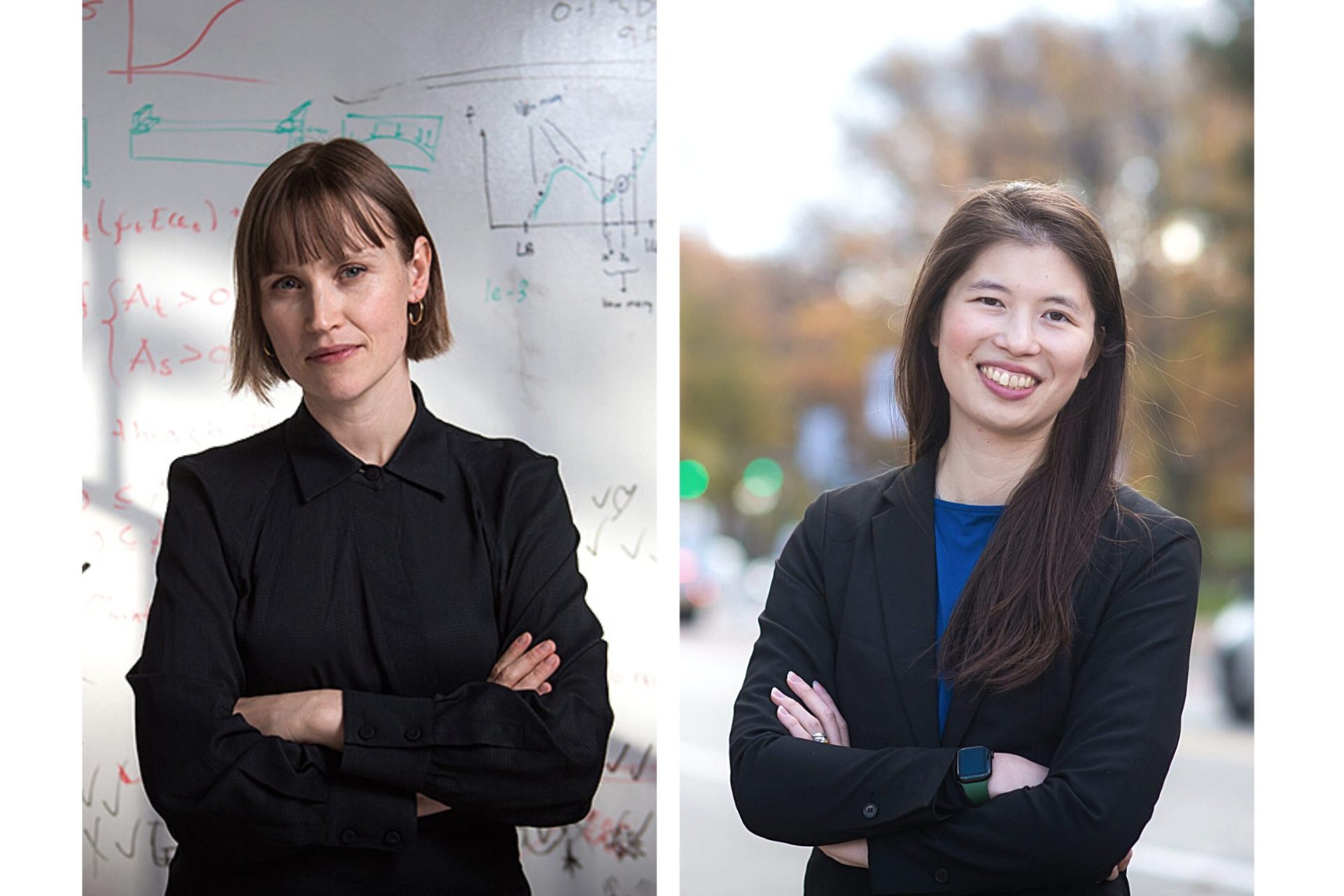Annual CEE Research Day showcases research across the department

The MIT Department of Civil and Environmental Engineering held its 12th annual Research Day event on Monday, February 26. Hosted by Associate Professor Benedetto Marelli and Assistant Professor Darcy McRose, the event brought members of the CEE community together for lightning-fast talks and poster presentations that showcase the diverse climate and sustainability research taking place in the department.
This year’s topic, “CEE Across Environments,” gave faculty, graduate students, and postdocs the opportunity to share their research across four themes—atmosphere, the built environment, soil, and water. With research ranging from colonization of skin microbiome to optimization of renewable energy systems, the event provided students and researchers with new perspectives on how to tackle the world’s most pressing issues.
“CEE touches on so many different fields, that sometimes it’s easy to feel like an imposter when you know “nothing” about wind turbines or concrete or our coastal ecosystems,” said Christopher Mancuso, a presenter and postdoc in the Lieberman Lab. “Every time I’ve been, the presenters make a real concerted effort to make their research accessible to a wide audience.” Mancuso said his biggest takeaway from the event was how these diverse approaches to combat climate change can add onto each other, rather than directly competing or working at odds with one another.
Assistant Professor Michael Howland, who studies the modeling, optimization, and control of renewable energy systems, kicked off the research talks with his presentation on coupled opportunities to understand and mitigate climate change. Howland highlighted three grand challenges for sustainability: modeling the atmosphere across scales for decision-making, understanding, modeling, and optimizing sustainable components, and designing and operating resilient sustainable systems.
Liying Qiu, a postdoc in the Howland Lab, presented her research on leveraging geographical data for optimizing energy systems with renewable sources. Postdoc Rahman Khorramfar’s presentation centered on cost-effective planning for decarbonized power-gas infrastructures to cut carbon emissions.
The final presentation under the atmosphere theme, “Guiding and Accelerating the Logistics Decarbonization” by graduate student Jonas Lehmann, investigated how freight transportation contributes to carbon emissions. The cost of low-emission technologies is highly uncertain, making companies hesitant to invest. Lehmann proposed a stochastic programming approach by incorporating cost uncertainty into a fleet replacement and management problem.
The second theme, the built environment, was introduced by Assistant Professor Josephine Carstensen, who presented “Low-Carbon Design for a Sustainable Built Environment.” Carstensen’s research aims to tackle rising global carbon emissions by designing structures with alternative materials. Building materials and construction makes up 11 percent of annual global carbon emissions, and as population and urbanization increase there is a need for construction and operation of new infrastructure that is safe for inhabitants. Carstensen’s approach explores designing structures with alternative materials, including reusing structural components in new designs.
Christopher Mancuso presented his study, “Intraspecies antagonism limits colonization in the skin microbiome,” which won an award for Best Talk. Mancuso’s research shared insights into Staphylococcus epidermidis, a type of bacteria commonly found on human skin. Some strains of this bacteria are shared between cohabitating people and certain factors prevent colonization of new strains, including competition for specific foods and competition for physical habitats. His research investigates whether interbacterial antagonism plays a role in colonization, finding that antimicrobials produced by one strain could kill another and that only strains that are resistant can colonize an individual.
Krishna Girish, a graduate student in the Systems Ecology Lab, wrapped up the Built Environment portion of the talks with his findings on the effect of external perturbations on the stability of microbiota.
Associate Professor Dave Des Marais introduced the third theme of the event, soil. His presentation focused on plant and microbe interactions, specifically how they can be optimized to reduce nitrogen inputs in agriculture and lessen the effect of rising carbon levels.
Mahdi Seyyedan, a graduate student in Professor Andrew Whittle’s Soil Mechanics Group, studied how expansive clay behaves under changing environmental conditions, particularly those associated with climate change and extreme weather events.
Associate Professor Otto Cordero introduced the final theme with a presentation about the microbial ecology behind carbon cycling. James Vincent Brice, a graduate student in Professor Nepf Lab and co-winner of Best Talk award, presented his research exploring ways to ensure the long-term success of oyster reefs and improve their efficiency in attenuating wave energy.
Two electronic poster sessions followed the research talks, allowing more students and postdocs to share their research with the community. Postdoc Laura Markey won in the Best Poster category for her poster, “Commensal skin bacteria exacerbate inflammation and delay skin healing,” while graduate student Antony Sutanto won for his research titled “Cracking Traditional Notions Relating Egg Strength to Impact Orientation.” Lastly, graduate student Maxwell Kalinowski won for his poster “Real-Time Analysis of Nanoscale Assembly Phenomena.”
“I always look forward to opportunities to see the research happening across the department; it allows me to engage other researchers in my own field while also developing fluency in cross-disciplinary communication,” said Brice. “There aren’t many other places you can exchange ideas with a room full of plant ecologists, structural engineers, computational physicists and marine chemists!”


